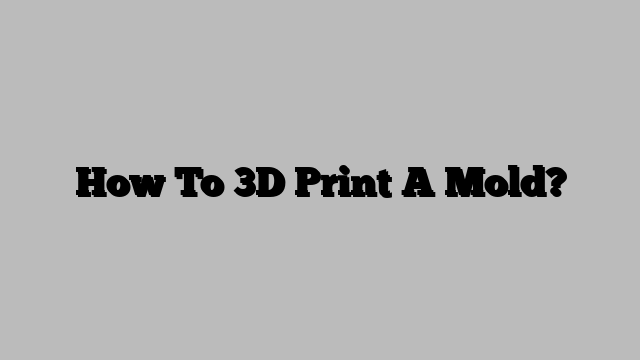3D printing technology has made it possible to create complex shapes and designs with ease. One of the most common applications of 3D printing is in the production of molds. In this article, we will explore the process of 3D printing a mold, including actionable insights that will make you knowledgeable about the process.
Step 1: Designing the Mold
The first step in 3D printing a mold is designing the mold itself. This can be done using specialized software, such as CAD (computer-aided design) software. The software allows the user to create a 3D model of the mold, including all of the necessary details and features. The design should take into consideration the desired material, size, and shape of the final product.
Step 2: 3D Printing the Mold
Once the design is complete, the next step is to 3D print the mold. This involves using a 3D printer to create the physical mold from the digital design. There are several different types of 3D printers that can be used for this purpose, including FDM (fused deposition modeling) and SLA (stereolithography) printers. The type of printer used will depend on the material being used and the desired level of detail in the mold.
Step 3: Preparing the Mold
After the mold has been 3D printed, it is important to properly prepare it for use. This may involve cleaning the mold to remove any excess material or support structures that were used during the printing process. It may also involve applying a release agent to the mold to prevent the final product from sticking to the mold.
Step 4: Using the Mold
Once the mold has been prepared, it is ready to be used. The specific process for using the mold will depend on the material being used and the desired outcome. For example, if the mold is being used to create a plastic part, the mold may need to be heated before the plastic is injected into it. If the mold is being used to create a metal part, it may need to be placed in a furnace to heat the metal to the desired temperature.
Step 5: Finishing the Final Product
After the material has been injected or poured into the mold, it is important to properly finish the final product. This may involve removing any excess material or support structures, sanding or polishing the final product, or applying a protective coating.
Conclusion
3D printing molds is a relatively simple and cost-effective way to create complex shapes and designs. The process involves designing the mold, 3D printing the mold, preparing the mold for use, using the mold to create the final product, and finishing the final product. If you are considering 3D printing a mold, it is important to work with a reputable and experienced service provider to ensure the best results.
